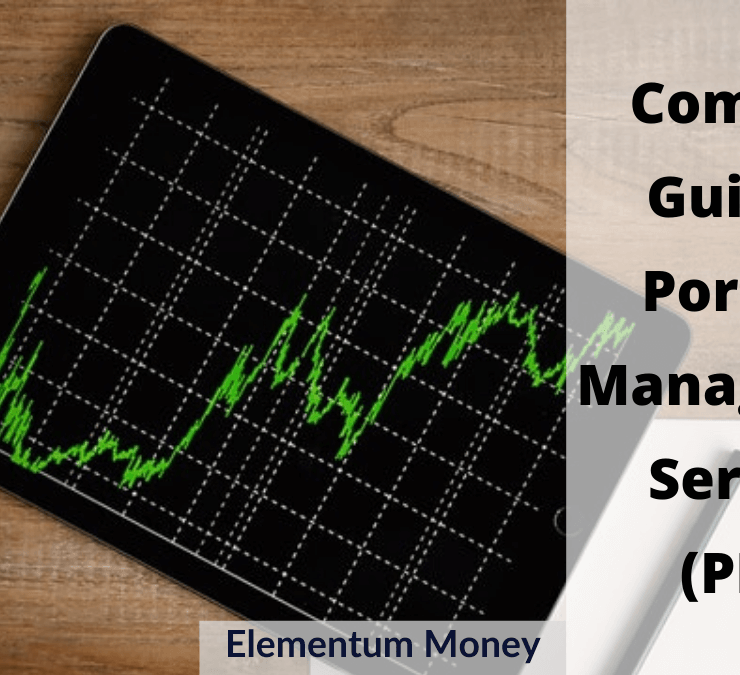
Nerd alert! Some days back, on a Sunday afternoon, I was reading a dated issue of Mutual Fund Insight (yeah, that’s what I have started reading in my leisure time 🙂 ) and I came across this article about an extensive SEBI investor survey or SIS done in September-November 2015. The surface-level findings mentioned in the article were pretty interesting. So, I decided to devote my Sunday in a quest to understand the Indian retail investor better.
METHODOLOGY
The SEBI investor survey, in its’ 4th edition, listed over 200,000 households and then went on to randomly select over 50,000 households to survey about financial and investment products. The respondents were well represented across the country (except Lakshadweep) and were interviewed between September and November 2015. Having commissioned some market research, you have to laud the logistical efficiency of Nielsen (the research partner) in getting this done.

SEBI undertook an extensive investor survey along with Nielsen resulting in below findings
The findings were released in Apr-May 2017. And I thought my company was slow. Ha! So even though the data that I will be referring to is almost a 2-year old reality and the scene would definitely have changed in the interim, I think a lot of these findings are pretty valuable. So, here go a few revelations about the Retail Indian Investor.
Small minority of Indian population invests
In India, retail investor participation is still miniscule as compared to mature markets where retail investor penetration is as high as 50{76b947d7ef5b3424fa3b69da76ad2c33c34408872c6cc7893e56cc055d3cd886}. The data derived from this research was extrapolated to project the total Indian investor base. By this estimation, there were a total of 33.7 million investor households in India. Of these, 70{76b947d7ef5b3424fa3b69da76ad2c33c34408872c6cc7893e56cc055d3cd886} or 23.7 million reside in urban areas with the remaining 30{76b947d7ef5b3424fa3b69da76ad2c33c34408872c6cc7893e56cc055d3cd886} or 10 million being rural residents. Mutual funds were the most popular investment route finding 66{76b947d7ef5b3424fa3b69da76ad2c33c34408872c6cc7893e56cc055d3cd886} takers (22 million) with direct equity finishing a close second 56.4{76b947d7ef5b3424fa3b69da76ad2c33c34408872c6cc7893e56cc055d3cd886} (19 million) investor households. Are you an investing household? What instrument do you prefer to invest in?
50{76b947d7ef5b3424fa3b69da76ad2c33c34408872c6cc7893e56cc055d3cd886} of the securities markets investors have started investing in the last 5 years
This set of people would include 2 types – one would be the first time entrants like me taking their first steps into the world of investments. The other type is the investor who lost a lot of money and heart during the financial crisis. After burning their fingers in that period and maybe even vowing to not invest, they have now been coaxed into it either thanks to the improving market valuation or the consumer literacy drives initiated by SEBI.
Indians still save more than the rest
With a savings of 31{76b947d7ef5b3424fa3b69da76ad2c33c34408872c6cc7893e56cc055d3cd886} to GDP, as per the 2014 World Bank data, India is among the top-20 saver nations. Click To Tweet
However, most of the savings are tied up in physical assets like gold and real estate. In a way, this is very intuitive considering we have grown up watching generations save up for years to buy a house or even putting away a little gold every year. In fact, we are second only to China in our consumption of gold, with a whopping 22,000 tons of the yellow metal estimated to be owned by Indian households. This mentality needs a slight shift with increased focus on financial assets in the securities market.
Income is not directly proportional to savings
One of the surprising findings was that 80{76b947d7ef5b3424fa3b69da76ad2c33c34408872c6cc7893e56cc055d3cd886} households with monthly income household of greater than 1 Lakh also have savings less than 40{76b947d7ef5b3424fa3b69da76ad2c33c34408872c6cc7893e56cc055d3cd886}. As per the rational school of thought, ideally savings percentage should increase with income, considering you can spend only so much on daily essentials. One of the hypotheses of the authors is that since only 3{76b947d7ef5b3424fa3b69da76ad2c33c34408872c6cc7893e56cc055d3cd886} Indians pay taxes, we are not so forthcoming on our information about savings and income. Another hypothesis is the existence of “safety nets” like insurance, family support etc which does not require them to save. Personally, my hypothesis is also the fact that avenues to spend in India have grown multi-fold. Combine peer pressure and the high price tags and you get a killer cocktail (pun not intended).
Your education and occupation could impact your investing pattern
Securities markets are complicated and the survey findings show a direct correlation between years of education and probability of investing in securities markets for the retail Indian investor. Click To Tweet While 25{76b947d7ef5b3424fa3b69da76ad2c33c34408872c6cc7893e56cc055d3cd886} of the highly educated (15+ years) respondents invested, less than 1{76b947d7ef5b3424fa3b69da76ad2c33c34408872c6cc7893e56cc055d3cd886} of respondents with 1-7 years of education did so.
In occupation, there were some surprising patterns. Most of us believe that government employees are risk averse. However, probably thanks to a stable income unlike the private sector employee, a whopping 23{76b947d7ef5b3424fa3b69da76ad2c33c34408872c6cc7893e56cc055d3cd886} of government employees are investors as compared to a mere 11{76b947d7ef5b3424fa3b69da76ad2c33c34408872c6cc7893e56cc055d3cd886} of the private sector employees. Business owners also showed a higher propensity to invest, with 17.5{76b947d7ef5b3424fa3b69da76ad2c33c34408872c6cc7893e56cc055d3cd886} investors in the sample.
We do not act on the basis of what we think
We all know equity and mutual funds should be held for at least 5 years to show their potential returns. We do, right? Which is why 58{76b947d7ef5b3424fa3b69da76ad2c33c34408872c6cc7893e56cc055d3cd886} investors claimed that they would hold on to their investments during market volatility. However, only 22{76b947d7ef5b3424fa3b69da76ad2c33c34408872c6cc7893e56cc055d3cd886} investors held on to their investments for more than 3 years
IPOs still do not find too many retail takers
Off late, we have heard about a lot of news around blockbuster Initial Public listings of stocks like D’Mart and HDFC Life. However, most of it is due to institutional investing. A mere 18{76b947d7ef5b3424fa3b69da76ad2c33c34408872c6cc7893e56cc055d3cd886} of the investor population from the surveyed respondents had invested in IPOs in the recent past. Retailers are still shy of putting in their money in IPOs considering a lack of information and trust in the company with no track record in the market.
Internet is still not the preferred medium for investing
Despite the fact that 88{76b947d7ef5b3424fa3b69da76ad2c33c34408872c6cc7893e56cc055d3cd886} of the investors were aware of the internet having information and as a medium to invest in mutual funds, only… Click To Tweet Traditional means of investing like MF distributors and call-in-trade (78{76b947d7ef5b3424fa3b69da76ad2c33c34408872c6cc7893e56cc055d3cd886} investors using the latter) still remain more popular ways to invest

Call-in trade remains the most popular medium to trade and invest
SIPs have made a mark on the Indian psyche
Thanks to the immense investor education about the benefits of regular and small investing into Mutual Funds through Systematic Investment Plans (SIP), it actually seems to have made a mark. Of the respondents, 60{76b947d7ef5b3424fa3b69da76ad2c33c34408872c6cc7893e56cc055d3cd886} of regular Mutual Fund investors were doing it through SIP.
Indian investors are surprisingly evolved
71{76b947d7ef5b3424fa3b69da76ad2c33c34408872c6cc7893e56cc055d3cd886} investors were aware of and believed in a high correlation between risk and return – higher the return, higher the risk in a particular investment. This was surprising as this nugget of wisdom is not considered common place. The representativeness bias – expecting larger, better-known companies to give higher returns – did not find enough of a representation (see what I did here? :)) among the surveyed respondents. This is brought out by the fact that over 70{76b947d7ef5b3424fa3b69da76ad2c33c34408872c6cc7893e56cc055d3cd886} respondents (investors and non-investors) did not consider a known CEO or brand to automatically translate into good returns. Of course, we also know that we do not always do as we say.
Brokers can let you throw things away
The same survey also had a leg of surveying about 1000 Market Participants (check for who all would be included). To me, the most telling finding from this part of the survey was the fact that 67{76b947d7ef5b3424fa3b69da76ad2c33c34408872c6cc7893e56cc055d3cd886} of the Market participants have voiced the fact that their clients have engaged in panic selling during a market downturn. However, only 33{76b947d7ef5b3424fa3b69da76ad2c33c34408872c6cc7893e56cc055d3cd886} of the Market Participants have tried dissuading them from doing so. This tells that either a lot of the market participants are themselves not aware of the merits of staying away from panic selling or they couldn’t really care less for their clients. In any case, the best you can do is read and learn the basics of financial planning for yourself. You should then use brokers only as a vehicle and not the steering wheel.
This is the Average Retail Indian Investor landscape. How many of these facts do you identify yourself with? Did any of these findings surprise you or just confirmed what you anyway thought was true. Share your opinion in the comments below or email me at aparna@elementummoney.com





Leave a Reply